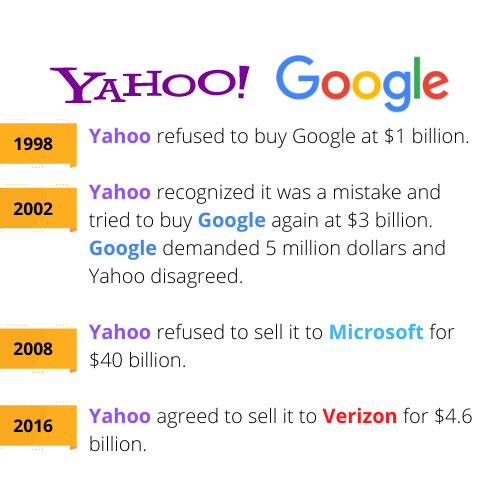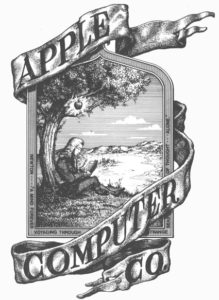Only one word can be used to define technology and it is stunning. There are so many different and interesting facts regarding it that will shock you and make you appreciate this term even more.
We love to discover fun tech facts because it makes us feel smarter and in the know. It’s always exciting to learn about something new, and when that something is related to technology, it’s even better! We’re constantly amazed by all the incredible things technology can do. So we can’t wait to keep exploring those interesting technology facts.
Table of Contents
50+ Fun and Interesting Facts about Technology

Did you know that the first computer mouse was made out of wood? Or that the first text message was sent in 1992? Technology has come a long way since then, and today we use technology for everything from communicating with friends to booking travel. Here are some more interesting facts about technology that you might not have known.
Here are some mind blowing facts about technology that you may not have known before:
- On 3rd December of 1992, the first message was sent.
- GPS is completely free to use. However, the maintenance and running cost is $2 million per day. The money is taken from the taxes in the United States.
- Bill Gates, a person who started Microsoft drop out of college. Gates was born into a wealthy family and had every opportunity to succeed. He was a bright student who excelled in mathematics and computer science. However, Gates dropped out of college after just two years.

- Many people assume that the Firefox web browser‘s logo is a fox, but this is not the case. The logo was inspired by a red panda, an endangered species native to the Himalayas. The red panda is often mistaken for a fox, due to its reddish-brown fur and bushy tail. However, it is more closely related to raccoons and bears.
- You can find a computer that was designed for Amish people. It is advertised as having no music, no video, and no internet.
- It’s no secret that the internet is a strange and dangerous place. However, many people are unaware of the fact that most internet traffic isn’t even real. That’s right – a study in 2012 discovered that most of the traffic on the internet wasn’t actually people, but was quite often made up of bots, hackers, and malicious programs.
- Most people would be surprised to learn that technophobia, or the fear of technology, is a real and growing phobia. In our increasingly digital world, technophobia can manifest in many different ways. For some people, it may be a fear of using new or unfamiliar technology. Others may be afraid of the potential for technology to cause harm, whether it be through cybercrime or data breaches.
- The word robot comes from old Church Slavonic word robota, which means servitude, forced labor, or drudgery.
- Compact disks or CDs read the information from the inner part to the outer rim. This is completely opposite to vinyl records.
- Ubuntu is an operating system based on Linux. The name Ubuntu means “I am because of you” and it is derived from the African word.
- You cannot be forced to pay using Bitcoin, but you can’t cancel a transaction either.
- QWERTY keyboard was invented in 1868 by Christopher Sholes. August Dvorak invented the Dvorak keyboard in 1932 and the goal was to be far more functional than the QWERTY.
- When you use a PC you blink 7 times per minute on average. The normal blinking rate is much higher, 20 times per minute. This is because blinking is primarily a reflexive action, and when we’re focused on a task, we tend to blink less.
- The first computer mouse was invented in 1964 by Doug Engelbart. It was made of wood.
- A video camera recorder or VCR was invented back in 1956 and the size was identical to a normal-size piano.
- The first Xbox included snippets of transmissions from Apollo.
- If you work at a computer and type 8 hours, your fingers will “travel” 12.6 miles.
- The first computer was invented far back in 1822 by Charles Babbage. It was very basic and obviously massive in size.
- 1 petabyte can hold over 13 years long TV shows in HD.
- Computer security day is celebrated on November the 30th each year.
- Around 86% of all people try to use their thumb USB drive upside down.
- NASA pulled a prank on the world on the 1st of April 2005. The prank was that they discovered water on Mars.
- To use GIF images in 1994 you had to pay a fee. PNG was invented as a free alternative and the company who invented GIF canceled the fee.
- A computer scientist named Donald Knuth began writing a book called “The Art of Computer Programming” in 1962 and is still working on it today.
- A dual-chip NVIDIA graphics card will get hot enough to cook a perfect omelet when the fan speed is decreased by around 10%.

- Apple’s first logo represented Sir Isaac Newton and an apple that falls on his head. The concept behind the logo was that of “Newton…eureka,” or the Aha! moment of discovery. The logo was meant to symbolize the company’s mission to provide innovative products that make a difference in people’s lives.
- Sega Mega Drive got the last game in 2010. It was so popular that it was sold out before launch date.
- Amazon sells far more eBooks than regular books.
- It took 38 years for radio to reach 30 million users. Television did the same for 13 years. iPod got 50 million users in 3 years only.
- CompuServe was the first Internet provider. It was founded in 1969 as a way for scientists to share computer resources. In 1979, CompuServe became the first service to offer email, and in 1980, it became the first service to offer a graphical user interface.
- The first iPhone presentation included several iPhones, but Steve Jobs had to hide the fact. If he used just one, the RAM will fill up and the iPhone will crash.
- It is known that people who use hands-free while driving are equally dangerous as drunk drivers.
- In the early days of alarm clocks, they were very simple devices that could only ring at a single time. The first ever alarm clock was able to ring at 4 a.m. only. This may seem like a strange time to wake up, but it was actually designed for farmers who needed to start their day early. Over time, alarm clocks became more sophisticated and were able to ring at multiple times.
- It’s no secret that spamming is a hugely successful business model. In fact, according to recent estimates, spammers get 1 response for every 12 million spam emails they send. That may not seem like a lot, but when you consider that the average spammer sends out billions of emails per day, it quickly adds up.
- The first ever camera needed 8 hours to capture a single photo. This means you had to stay still for the entire time.
- 35 is the average lifespan of gamers who live and play games in the United States.

- The electric chair, popular in prisons and movies was invented by Alfred Southwick. He was a dentist.
- Sega Dreamcast was the first gaming console that allowed players to play online, real-time games. It was released in 1999.
- PNG can be said in many ways, but the team who developed this picture format wanted to be pronounced as ‘’ping’’.
- Among the many languages that Google Translate can interpret, one might be surprised to find Klingon. Created for the Star Trek franchise, Klingon has been developed over the years by a dedicated group of fans. In 2002, Google added Klingon to its online language translation tool, giving fans of the Star Trek universe a way to communicate with one another in their native tongue.
- $680 worth of transactions happens on eBay each second.
- Israel builds the first drones. In the early 1970s, Israel began developing unmanned aerial vehicles (UAVs), also known as drones.
- Surgeons who played games as children cause errors 37% less.
- The chip in a credit card is based on EMV technology and it was invented in France in 1986. Germany started to use the same technology soon after.
- In 1999 one of the worst business ideas was PayPal. The company didn’t take off until 2002 when it was forced to pivot to a new business model centered on online payments. This was a much better fit, and PayPal quickly became one of the most popular ways to pay for goods and services online.
- Astronauts who went to space on Apollo 11 had to sign photos so their families could sell them in case of an accident. They were unable to get life insurance.
- You can type Alaska using just one row of your keyboard if you use the QWERTY layout.
- 60% of revenues some games reach comes from 0.2% of all players.
- Snapchat was launched in 2011 and is known as Picaboo. In 2012 the name was changed to the current one.
- In 2017 Samsung received approval so they can test self-driving cars in their home country, North Korea.
- At or @ was the first new symbol to be added to Morse code in a few decades. The humble at sign was only introduced in recent years, long after the last major update to the code. While it might seem like a small change, it’s a big deal.
- That’s right, 90% of the code you write in many coding projects will be boilerplate code. Although it can take some time to get used to this idea and adjust your thinking accordingly – plenty of benefits come with writing more generic routines instead!
- The findings of a recent survey showed that over 65% of developers are self-taught. Furthermore, almost 40% learned how to code through online courses. The rise of self-taught developers is likely due to the growing accessibility of online resources. You can learn how to make an app via free resources like code camps, Youtube videos, and online courses.
- Anthony Greco is better known as the first man to be arrested for sending spam messages. He was arrested in 2005.
- These were the most impressive facts about technology that happened. There will be a lot more of them if we know that technology is advancing as we speak.
- The world is full of hackers who write about 6,000 new viruses each month. These are designed to target a wide selection of operating systems so learning how you can avoid them will help keep your device safe!
- The first computer programmer was a woman named Ada Lovelace. She lived in England and worked as both a mathematician and writer, helping shape the way that computers operate today with her work on ciphers (a branch of mathematics).
- Did you know that Nokia used to sell toilet paper? In the early days of the company, Nokia was known for its wide range of consumer products, including items like toothpaste, soap, and even toilet paper.
- As of 2017, there are still 2.1 million people using dial-up to get online. That may seem like a small number, but it’s a significant increase from just a few years ago.
- On February 26, 2009, Google sent out its first-ever tweet. To the untrained eye, it appeared to be a string of random numbers and letters. Translated into English, the tweet read, “I’m feeling lucky”.
- It wasn’t that long ago that the very first commercial handheld mobile phone was produced by Motorola. The device was called the DynaTAC 8000X, and it hit the market in 1983.
- Mark Zuckerberg, the billionaire founder of Facebook, is red-green colorblind. This means that he cannot see the colors red and green as clearly as other people. For example, when he looks at a stop light, he sees a mix of yellow and blue. As a result, he often wears grey or blue clothes because they are easier for him to see.
- Most experts agree that artificial intelligence (AI) is the wave of the future. But what exactly is AI, and how will it change the way we live and work? AI is a branch of computer science that deals with creating intelligent machines that can think and work like humans. This technology is already being used in a variety of ways, from personal assistants like Siri to self-driving cars.
- The average 21-year-old has already spent at least 5,000 hours playing video games. That’s over 208 days! And that’s just an average. Some people spend even more time than that in front of a computer or gaming console.
- It’s pretty staggering to think about the sheer number of malware and viruses that are found each day – between 300,000 and 400,000. And that’s not even counting the countless spam emails that we receive daily, around 90% of which contain some form of the virus.
- In today’s digital age, it’s no surprise that social media plays a role in many divorce proceedings. More than 30% of divorces in the United States cite Facebook as a contributing factor. For couples who are already on shaky ground, the constant stream of carefully curated images and updates can be a major source of contention.
7 Weird but True Facts about Technology
Technology is a fascinating thing. From the moment we first learn to use it, we’re hooked. We can’t help but explore all of its possibilities. But even though we know and love technology, there are still some things about it that surprise us. Here are some weird but true technology facts that you may not have known. Who knows, you might just learn something new!
- If you’re using a printer, you can use a lighter font for whatever is being printed on your pages to make it use less ink. Fonts come in different styles, weights, and widths. The idea behind using lighter-weight typefaces is that you’ll save 10% less ink if all your printing happens on older technology like photographic print heads which use cartridges instead of tanks/laser printers.
- With the world’s currency being digital, it means that most of your earned money exists only on computers and hard drives. An estimated 8 percent is physical cash, and the 92 percent left is digital.
- Domains were free until Network Solutions charged their customers for it in 1995. In 1994, the internet was still a relatively new discovery. This means that anyone who wanted to take advantage of this free way to register domain names had plenty of time to do so!
- IBM’s RAMAC computer was a revolutionary step in the development of storage technology. It is considered by many to be one of if not THE first ‘hard drive’ type devices ever created! In 1956, 5MBs (5 Megabytes) weighed just over 1 ton.
- Russia’s computers have always been a bit different from the rest of them. In 1936, they built an ingenious machine that ran on water and could even print reports about its functioning!
- Wikipedia displays a constant battle against vandalism. It’s not just people who edit Wikipedia with malicious intent, any ordinary user can also sign up and change pages at will – which means that there is always someone willing (and able) to go to great lengths for their amusement or curiosity!
Facts about Technology
- Interesting Facts about Technology
- 5G
- AI
- Amazon
- Android
- Apollo 11
- App Development
- Apple
- AWS
- Battery
- Big Tech Companies
- Bill Gates
- BMW
- Bridge
- Camera
- Canva
- CCTV
- Chrome
- Chromebook
- Computer
- Computer Keyboard
- Cryptocurrency
- Drone
- Earth
- eBay
- Electricity
- Firefox
- Gadget
- Georgia Tech
- Google Play Store
- GPS
- Hacking
- Helicopter
- Hosting and Domain
- HTML
- Hyperloop
- Internet
- IoT
- iPad
- iPhone
- JavaScript
- jQuery
- Kindle
- Laptop
- Math
- Michael Faraday
- Microsoft
- Microsoft Office
- Mobile Phone
- Motorcycle
- Netflix
- Nintendo 3DS
- Nintendo Game Boy
- Nintendo Switch
- NordVPN
- Number 1
- Nvidia
- PayPal
- PHP
- PlayStation 4
- PlayStation 5
- PlayStation
- Programming
- Python
- Radio
- Roller Coaster
- Samsung
- Satellite
- Science
- Siri
- Smartphone
- Snapchat
- Solar Energy
- Sony
- SpaceX
- Steam Deck
- Sudoku
- Telescope
- Tesla Motors
- TikTok
- Ubuntu
- Video Game
- VPN
- VPN Myths
- Website
- Wi-Fi
- Wind Energy
- Windows
- Women in Technology
- WordPress
- X-rays
- Xbox One
- Xbox Series X
- Yahoo
- YouTube


